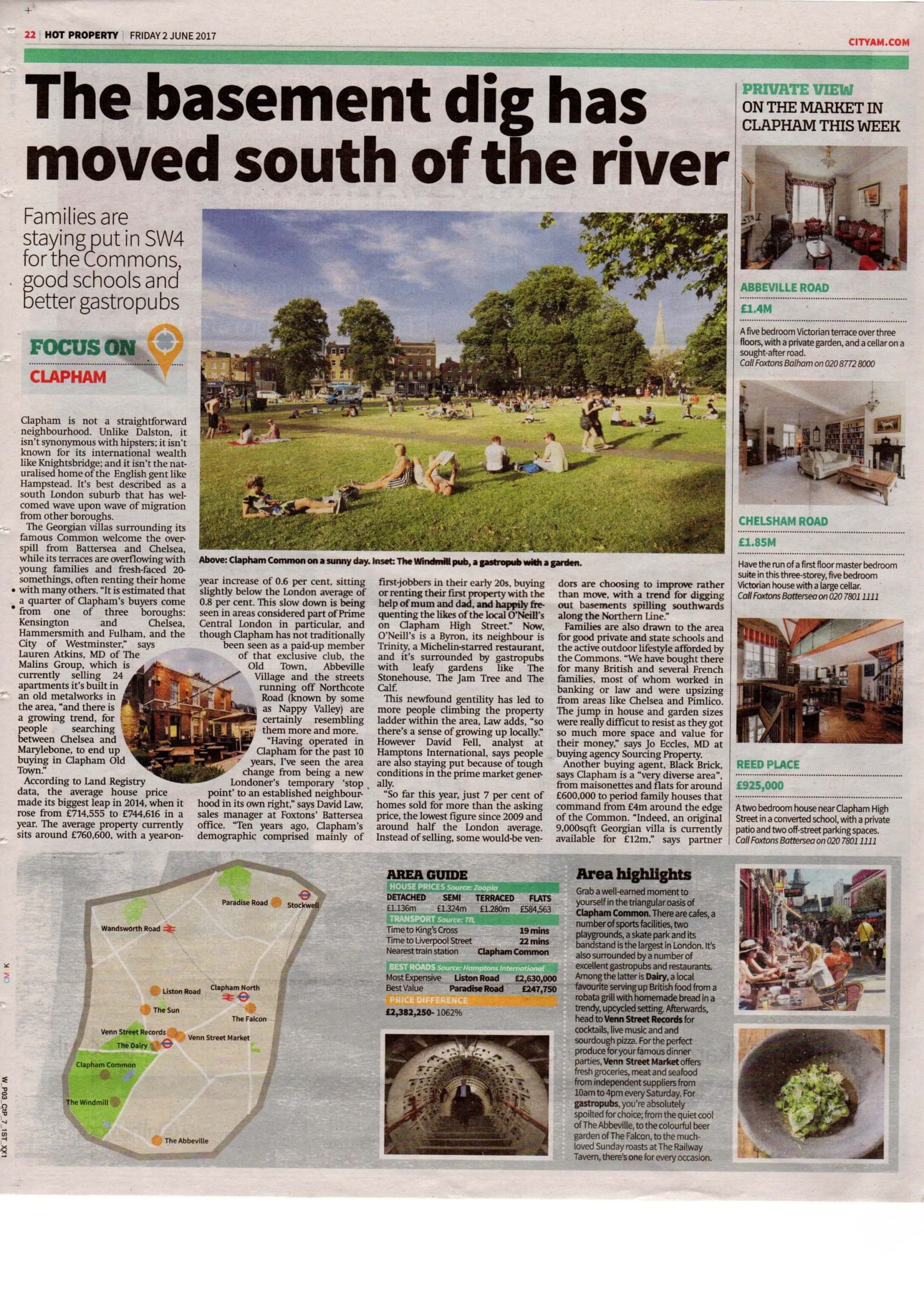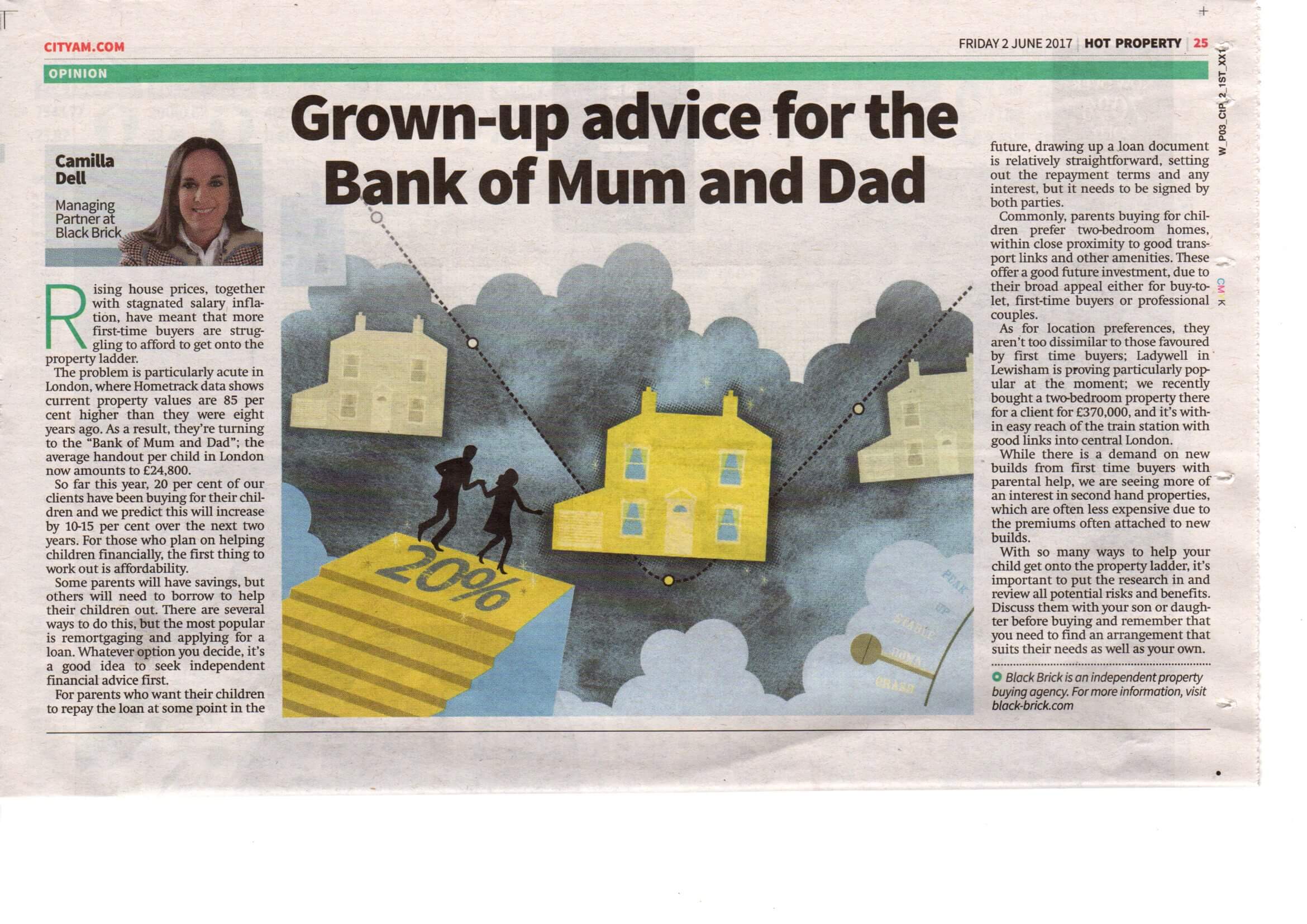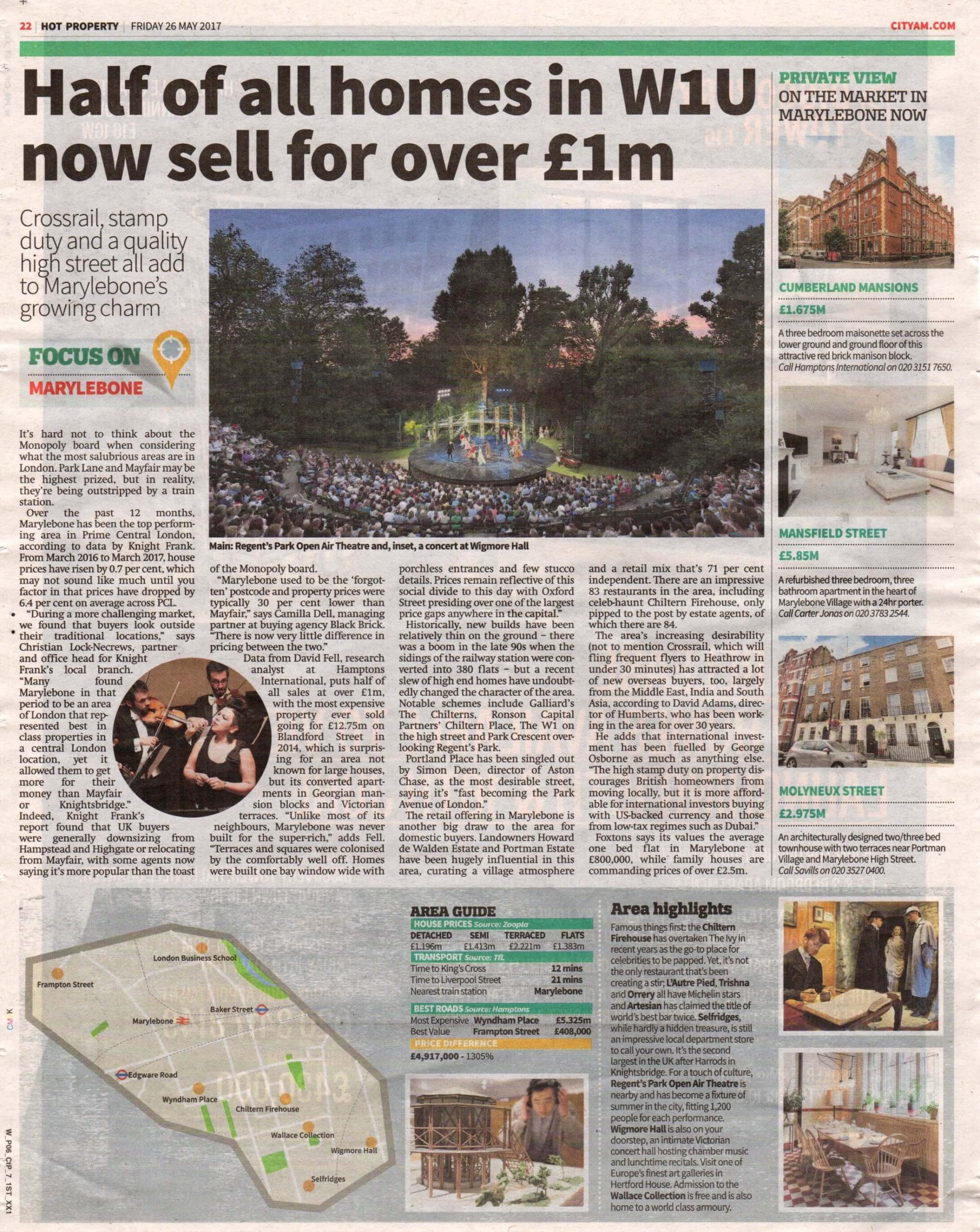By Melissa York
From 23-25 May, Clerkenwell Design Week will be upon us again. The annual event, with its artisan furniture makers and 3D-printing architects, will be the eighth celebration of the area’s transformation from post-industrial, City backwater to the home of more creative businesses and architects per square mile than anywhere else in the world.
And it hasn’t just found favour with businesses, but residents too, as increasing numbers of Londoners look to the design district as a desirable place to live. The local branch of Dexters estate agents says Clerkenwell “is the high-end face of edgy east London, with its eclectic mix of loft-style apartments, period homes and modern blocks within a commercial setting.”
The only thing to say about Clerkenwell’s housing stock is that it’s incredibly diverse. Foxtons notes that only 12 per cent of the property portfolio is freehold, which accounts for the popularity – and higher asking prices – for apartments and terraces. Property prices vary enormously, depending on the particular dwelling. This variation is due to the absence of a single masterplan to develop the area, as it was owned by over 100 different estates.
“Narrow streets lined with old industrial buildings saw Clerkenwell give birth to loft living in London during the early 90s,” says David Fell, research analyst at Hamptons International, who marks Manhattan Loft Corporation’s first project in Summer Street as a turning point. “Local developers were quick to follow, with warehouses vacated by artisans converted into flats for the legions of new City workers created by the 1980s Big Bang.”
The number of conversion schemes has meant two thirds of sales sold last year were new homes. While these conversions are still wildly popular, they are not all created equal. Jamie Burnhope, a buying consultant at Black Brick, says, “In the 80s and 90s, developers did not spend a lot of money maintaining the integrity of the buildings, and as a result, many lost their original character. There are only a few buildings that deliver the type of flat associated with the area, including 190 St John Street, Paramount Building, Ziggurat Building, 1-10 Summers Street and Warner House.”
But it’s not just the architecture that draws people to live in Clerkenwell; it’s the social life. Restaurants, gastropubs, boutiques and theatres have come moved in, and 80 per cent of its retailers are independents. “The main difference between what it used to be five years ago and now is how cosmopolitan and upbeat the area has become,” says Foxtons’ Josh Walsh. “It used to be seen almost as an extension of the City, buzzing during weekdays, but quiet at weekends.”
The area’s newfound vibrancy means it’s seen year-on-year house price growth of 7.7 per cent, according to Hamptons International data, which also recorded 102 sales of over £1m in 2016. Your average two bedroom flat will cost in the region of £950,000, around £2,500pcm to rent, proving a solid buy-to-let investment, according to Jo Eccles, managing director at Sourcing Property.
“Gross rental yields are much higher than other parts of London; we’re achieving on average 3.4 per cent for the landlords whose properties we manage and the investment properties that we bought have all let extremely quickly, typically to finance, tech and media tenants.”
Work is also nearly complete at Farringdon for the new Crossrail station, which is expected to arrive in 2018.
“From here you can walk into the City but creating that link between Farringdon and Canary Wharf is going to provide a huge change,” says Chris Rowe, sales manager at KFH Clerkenwell. “No one’s buying now knowing that they’ll then be able to get to work in a year’s time. People want to move in when the transport links are there, so I don’t think we’ll really see that jump [in prices] until it’s here. But they are definitely going to jump.”
But until that time comes, Clerkenwell will have to settle for being the City’s cooler, creative cousin.
Area highlights
There are more great local restaurants in Clerkenwell than you can wave a greasy spoon at. The Hawksmoor team are behind Foxlow, a modern European restaurant that loves its meat, while fancy French can be had at the Bleeding Heart, and its neighbouring pub and bistro. For a cracking brunch, head to The Modern Pantry, serving up cooked combinations that are a mile away from your standard eggs benedict, or go bottomless at the Bourne & Hollingsworth Building at the weekend. Smithfield, London’s oldest meat market, is as popular as ever, while Exmouth Market, on a semi-pedestrianised street, is its trendier neighbour. See some of the best dance companies in the world perform at Sadler’s Wells, the sixth theatre on the site since 1683, while the Charles Dickens Museum, near the border with Holborn, is also worth a look-in for original manuscripts and personal artefacts.
Area guide
House prices Source: Zoopla
DETACHED
£279,082
SEMI
£366,196
TERRACED
£934,883
FLATS
£803,010
Transport Source: TfL
Time to King’s Cross 3 mins
Time to Liverpool Street 5 mins
Nearest train station Farringdon


